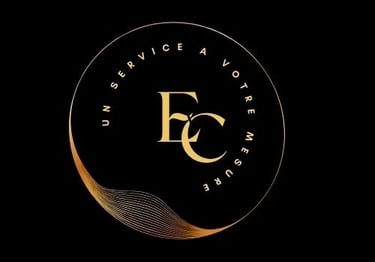Bing SEO and Copilot: The New Edge in B2B Marketing
Discover why Bing SEO with Copilot integration is the fastest way to reach B2B decision-makers and boost your brand visibility. You've to change your marketing goals.
WEBMARKETING
8/13/20257 min read


In today’s shifting B2B search landscape, visibility is no longer solely about capturing the top slot on Google—it’s about being the answer itself. Remarkably, nearly a quarter of U.S. desktop users—around 23%—now prefer Bing to Google, especially among business executives. That preference comes with weight: Bing reaches an exclusive user base of over 44 million desktop searchers, and as of 2025, Copilot—Microsoft’s AI assistant integrated across Windows and productivity tools—is being used by 33 million people. Ecosystems like Microsoft Edge, Windows search, and Office 365 embed Bing and Copilot into everyday workflows, making these platforms the de facto engines for decision-makers.
As AI-driven assistants like Copilot become ubiquitous among professionals, the way content is discovered is evolving rapidly. According to a recent study, 86% of users reported using Copilot daily for at least one task, including information retrieval and writing assistance, and nearly 34% of organizations find employees leveraging Copilot as a routine part of their work. These numbers highlight not just user adoption, but a behavioral shift: executives are increasingly relying on AI to search, summarize, and synthesize information without clicking through to websites.
This emerging reality has substantial consequences for B2B web visibility. Gartner projects a 25% decline in traditional search engine volume by 2026, driven in part by "zero-click" experiences where AI provides direct answers instead of external links. AI-generated responses now account for 13.1% of U.S. desktop queries. That means a significant chunk of user intent is being satisfied before a single click—rendering traditional SEO insufficient on its own.
Enter Answer Engine Optimization (AEO): the new frontier of visibility in an AI-first world. AEO goes beyond ranking—it's about crafting content rich in structure, clarity, and context so that AI becomes more likely to pull it as a trusted source. AI systems typically cite authoritative results, favoring them for summaries and overviews. As traditional SEO becomes less reliable for driving traffic, AEO becomes critical for maintaining visibility in AI-generated responses.
The stakes are high for B2B brands seeking to retain influence and reach executives embedded in AI-assisted workflows. If your content isn’t designed as a direct, authoritative answer, you risk being bypassed entirely. On the flip side, brands can now benefit from equitable exposure—even if they aren’t top-ranked in traditional search. In trials where ChatGPT was queried repeatedly about ticketing software, Zendesk appeared in 94% of responses—a striking example of brand visibility in AI-generated answers. AEO opens the door for solution providers to surface in those AI-first spaces.
Ultimately, this means rethinking how we measure marketing success. No longer can performance be gauged purely in clicks or rankings; AI exposure—mentions, citations, and inclusion in chat responses—becomes the new equivalent. In this new era, thriving depends on being the answer, not just another result. In the upcoming sections, we’ll unpack how to build B2B content and branding strategies around AEO, enhance AI visibility, and win trust in executive search behaviors dominated by AI. The time to adapt is now !
Why Copilot Is the Default Search Tool for Executives
Microsoft has woven Bing Copilot into the fabric of professional workflows by integrating it directly into Windows, Edge, and Microsoft 365. With over 33 million active users by 2025 and more than 89 million visits in April alone—a leap of 20 million from February—Copilot has become nearly unavoidable. For many businesses, opening a browser or launching a search engine even feels outdated; Copilot responds faster, leverages enterprise security, and aligns with IT protocols. This seamless integration, coupled with Bing being the default choice in Windows environments, explains why firms choose Bing over Chrome or Google Search—control, convenience, and corporate readiness all bundled together.
How AI Summaries Override Organic Visibility
When Copilot or Bing’s AI generates summaries, the original links often vanish from focus. On Google, just 8 % of users click a traditional link after seeing an AI-generated summary, compared to 15 % when no summary is present. Yet even this may be optimistic: some publishers report click-through drops ranging from 40 % to as high as 80 %, especially for news content. Industries like fashion, cooking, and DIY have seen traffic collapse—sometimes down 70 %—and independent creators posting “how-to” content lost up to 65% of their page visits. These AI Overviews are effectively gatekeepers, channeling user attention away from traditional results toward AI-synthesized answers.
The Search Algorithms That Silence Your Website
It's no longer enough to rank in the Top 3. According to Ahrefs, sites occupying the first organic position saw their click-through rates plunge by 34.5 % when featured beneath an AI Overview. Amsive’s analysis across 700,000 keywords paints a similar picture, with an average 15.5 % drop in CTR, reaching nearly 20 % decline for non-branded searches and up to 37 % when combined with featured snippets. As AI Overviews balloon—now appearing in 42.5% of search results—this trend is expected to worsen. The era when scoring a top rank almost guaranteed visibility is over.
Escaping the AI Summary Trap with AEO
To remain visible, content must become AI’s go-to answer. Answer Engine Optimization (AEO) is not SEO repackaged—it’s content formatted for inference, with clarity, structure, and context that resonate with AI logic. Though still early-stage, AEO first-movers are gaining ground. Brands that articulate answers in a way AI considers authoritative may get cited directly in summaries where others don’t even appear. For example, some brands find their content cited by AI despite ranking lower than competitors in traditional results—a testament to the power of structured, answer-ready content.
"The Executive Persona: Copilot’s Daily User in the Boardroom"
Imagine the B2B marketing decision-maker who rarely opens a browser. For them, Microsoft Copilot is just there—embedded in Windows, Edge, Office, and daily workflows. By 2025, Copilot had amassed 33 million active users across Windows, web, and application environments, with over 36 million downloads since launch. Microsoft is also reportedly close to landing a deal that would bring Copilot to a single customer with more than one million Microsoft 365 licenses, potentially adding hundreds of millions in annual revenue. In practical terms, the corporate executive, project manager, and IT director increasingly turn to Copilot for quick insights, summaries, and answers rather than manually launching a search engine or visiting websites.
"Bing’s Desktop Dominance: Built into Business Devices"
Overall, Bing remains behind Google in everyday volume, but its placement in professional settings gives it outsize importance. Globally, Google controls about 89.6% of searches, while Bing holds around 4.0% (The Official Microsoft Blog, StatCounter Global Stats). Yet in the B2B context, Bing’s relevance leaps. In the United States, 84.9% of B2B search traffic still happens on Google—but Bing holds 3.7%, and that share grew by 12% year-over-year, outperforming the overall market growth. Furthermore, traffic arriving from Bing delivers stronger engagement: users coming via Bing spend about 23% more time on site compared to those referred from Google—an indicator of higher quality B2B traffic.
"Copilot Integration and the Opportunity for B2B Visibility"
Because Copilot sits at the intersection of Bing, Windows, Microsoft 365, and enterprise IT, it functions like a built-in assistant for professionals. A recent UK trial with 14,500 civil servants revealed that Copilot users saved an average of 26 minutes per day, with entry-level workers seeing up to 37 minutes saved, and over 80% feeling they couldn’t imagine going back to work without it. This shows the tool isn’t just used—it’s becoming indispensable. For B2B marketers, this fact underscores why being visible to Copilot users—who may never click through search results—is crucial.
"Why Marketers Should Target Copilot-Driven Search Behavior"
When you align your content strategy with how Copilot works, you’re tapping into conversations that clients are already having with their computers. While Google still powers the majority of global search volume, Copilot—fed by Bing—captures decision-makers in the moment, delivering answers directly in interface rather than trailing them to websites. And because Bing delivers higher-converting, longer-engagement traffic in B2B contexts, optimizing for AEO through Copilot offers a path to stand out where it matters most: in executive workflows, on devices already integrated with your messaging.
In short, the ideal Copilot user is a professional—often managerial or higher—who works on enterprise devices, consumes information via AI-embedded workflows, and requires efficiency. Bing powers these workflows, and its desktop-based, AI-enhanced presentation makes it uniquely suited for B2B marketers aiming for visibility, not just ranking.
"Speed, Simplicity, and Strategy: Why Bing Wins in B2B SEO for Copilot Users"
In a B2B environment where minutes count, Copilot’s AI-driven summaries deliver precise information instantly—with the user often satisfied before seeing a single source link. Statistically, when users encounter an AI-generated response, traditional links are ignored nearly twice as often: just 8% of users click through, compared to 15% when no summary appears. That means readers who accept AI answers without seeking sources are unlikely to engage deeply with an article—especially if they’re in a high-pressure executive role where time is precious.
However, this behavior pattern opens an opportunity for B2B marketers: Bing’s SEO environment is both efficient and less competitive, making it a strategic choice for visibility among decision-makers. Bing holds about 3.9% of global search market share, but notably commands 11.8% of the desktop search market, where many B2B professionals do their research.
In sectors like finance and technology, where executive-level queries dominate, organic visibility on Bing yields especially meaningful results. Moreover, Bing referral traffic results in 23% longer average visit durations than Google referrals—indicating not just volume but higher engagement quality.
So, while Copilot satisfies speed-driven search habits through AI summaries, optimizing for Bing ensures that your content remains visible—and even favored—within enterprise workflows. The lower competition on Bing creates more accessible search intent, allowing B2B brands to stand out not just as another result, but as a trusted, efficient answer in a landscape where time is the scarcest resource.
From Persona to Presence: Why Bing SEO Powers B2B Branding
In B2B, success comes from aligning your strategy with your persona, not just your audience. A decision-maker’s search journey is shaped by their tools, environment, and time constraints—and with Copilot and Bing built into enterprise devices, these tools are no longer optional. Optimizing for Bing isn’t a side project; it’s a direct path to owning the first touchpoint your ideal buyers have with your brand.
Bing’s lower competition and stronger foothold in desktop-heavy corporate environments mean your brand can stand out faster, with messaging precisely tuned to your decision-maker’s intent. This is not only about visibility—it’s about embedding your expertise in the very spaces your persona trusts for answers. In this context, Bing SEO becomes a branding tool: relevant, consistent, and strategically placed to reinforce your position as the obvious choice. Companies that recognize this link between search presence and brand perception will set the standard in their market, shaping how their persona sees the entire category.




EUSKAL CONSEIL
9 rue Iguzki alde
64310 ST PEE SUR NIVELLE
07 82 50 57 66
euskalconseil@gmail.com
Mentions légales: Métiers du Conseil Hiscox HSXIN320063010
Ce site utilise uniquement Plausible Analytics, un outil de mesure d’audience respectueux de la vie privée. Aucune donnée personnelle n’est collectée, aucun cookie n’est utilisé.